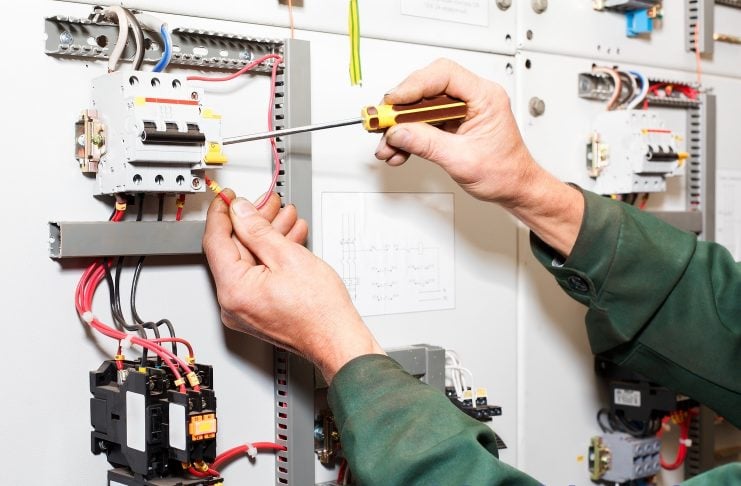Regulation on Minimum Knowledge Requirements for Intermediate-Level Industrial Electrical Engineering
Recently, the Ministry of Labor, Invalids, and Social Affairs issued Circular 48/2018/TT-BLDTBXH regulating the minimum amount of knowledge and competency requirements that learners must achieve after graduating from intermediate and college levels in technical fields of electrical, electronics, and telecommunications.

Minimum Knowledge Requirements for Industrial Electricity at Intermediate Level - Illustration
As stipulated in the regulations on minimum knowledge volume, competency requirements that learners must achieve after graduating at the intermediate level, and college level in the industrial electricity sector, promulgated together with Circular 48/2018/TT-BLDTBXH, the minimum knowledge that learners must attain after graduating in the field of industrial electricity at the intermediate level is as follows:
- Present principles and standards to ensure occupational safety and electrical safety for people and equipment;
- Describe the structure, operating principles, characteristics, and applications of electrical devices, electrical tools, and electrical materials;
- Present methods for measuring parameters and basic quantities of electrical circuits;
- State basic concepts, laws, and theorems in direct current, alternating current, and three-phase alternating current circuits;
- Describe the conventional symbols on electrical drawings;
- Explain the structure and working principles of electrical machines;
- Describe methods for calculating parameters, and wiring completion of small power transformers as required;
- Present technical standards of common electrical material groups according to Vietnam standards and IEC standards;
- Describe concepts regarding ISO 9001:2015 standards;
- Analyze the principle diagrams of electrical systems of machine tools such as lathes, milling machines, drilling machines, planers, and production machines such as conveyors, cranes, elevators, electric furnaces...;
- Present the principles of various types of sensors; sensor circuits;
- Describe the principles of power supply transmission systems;
- Explain principles and methods for controlling the speed of electrical drive systems;
- Analyze the structure and principles of some typical devices like soft starters, inverters, and converters;
- Describe the structure, symbols, characteristics, and applications of passive components;
- Explain the structure, symbols, characteristics, and applications of semiconductor components, methods for setting up components in electrical circuits, and methods for determining technical parameters of components;
- Describe the structure of some simple electronic circuits using electronic components and their operational principles;
- Describe how to use measuring devices, welding devices;
- Explain the structure, operating principles of power electronic components;
- Present procedures in maintaining and replacing power electronic components to meet technical standards;
- Describe the structure and operating principles of programmable control systems;
- Outline basic knowledge about politics, culture, society, law, national defense and security, and physical education as regulated.
Details are specified in Circular 48/2018/TT-BLDTBXH, effective from February 10, 2019.
Le Vy
- Responsibilities of officials of the Ministry of Finance of Vietnam when they are issued Official Passports from November 19, 2024
- 06 solutions to enhance the effectiveness of social policy credit in the new phase in Vietnam
- Financial support level for the purchase and repair of transportation vehicles for the Economic - National Defense Corps in Vietnam from December 30, 2024
- Financial support levels for purchasing and repairing of medical equipment for the Economic - National Defense Corps in Vietnam from December 30, 2024
- Latest regulations on management and use of passports for officials and public employees of the Ministry of Finance of Vietnam
- New regulations on the procedures for veterinary sanitation inspection in Vietnam from January 6, 2025
-

- Responsibilities of officials of the Ministry ...
- 16:00, 23/11/2024
-

- 06 solutions to enhance the effectiveness of social ...
- 15:32, 23/11/2024
-

- Guidelines for registration and organization of ...
- 11:53, 23/11/2024
-

- Contents of audit service quality control in Vietnam
- 11:00, 23/11/2024
-

- Acts in violation of Law on Independent Audit ...
- 10:30, 23/11/2024
 Article table of contents
Article table of contents
